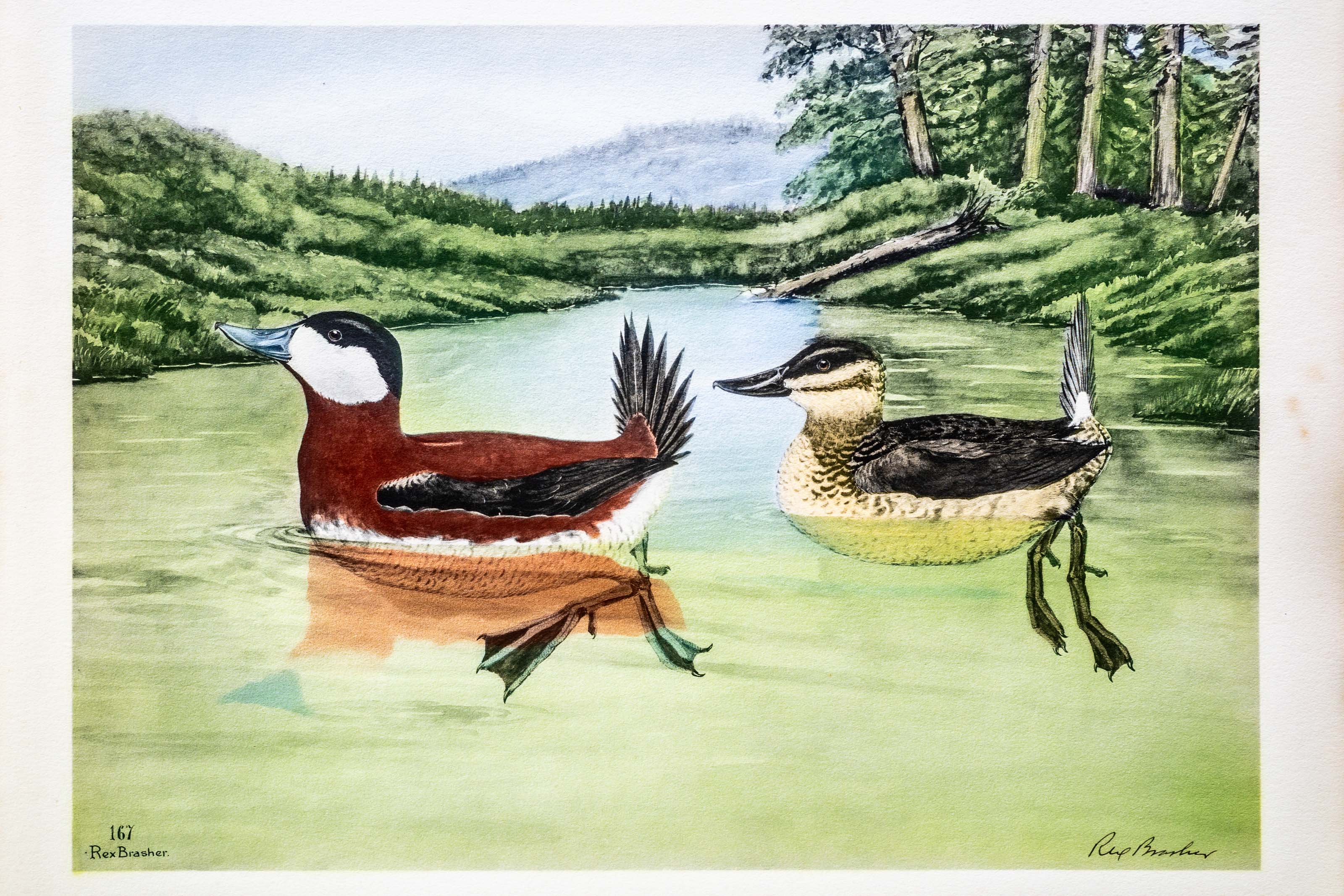
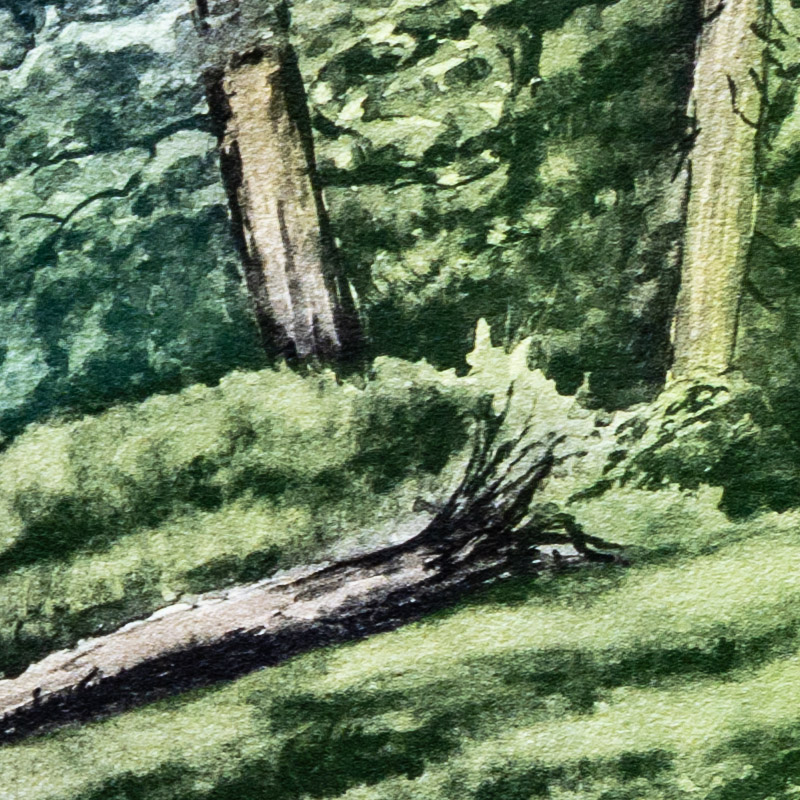
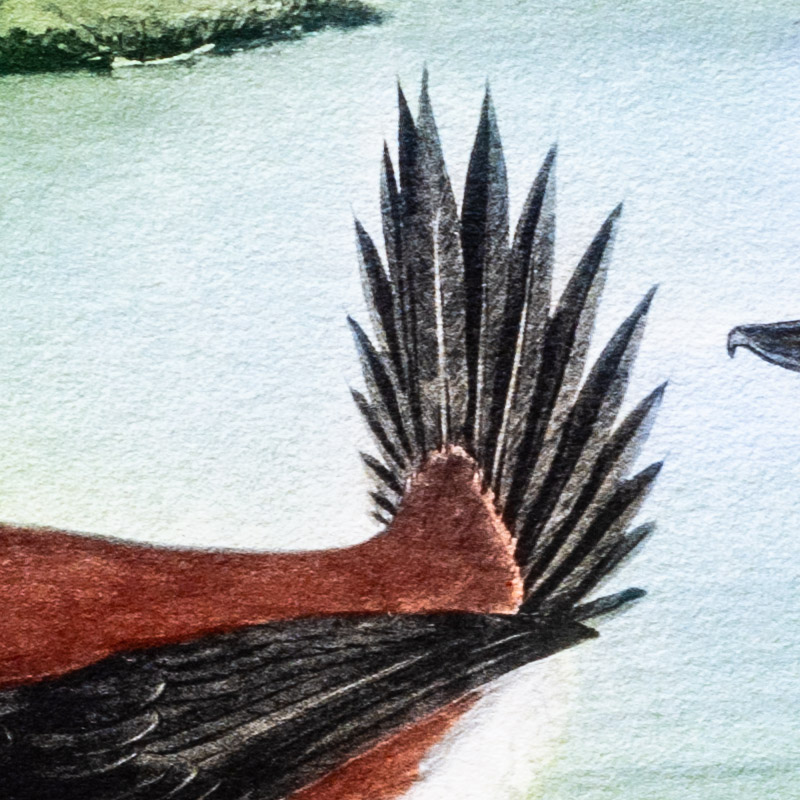
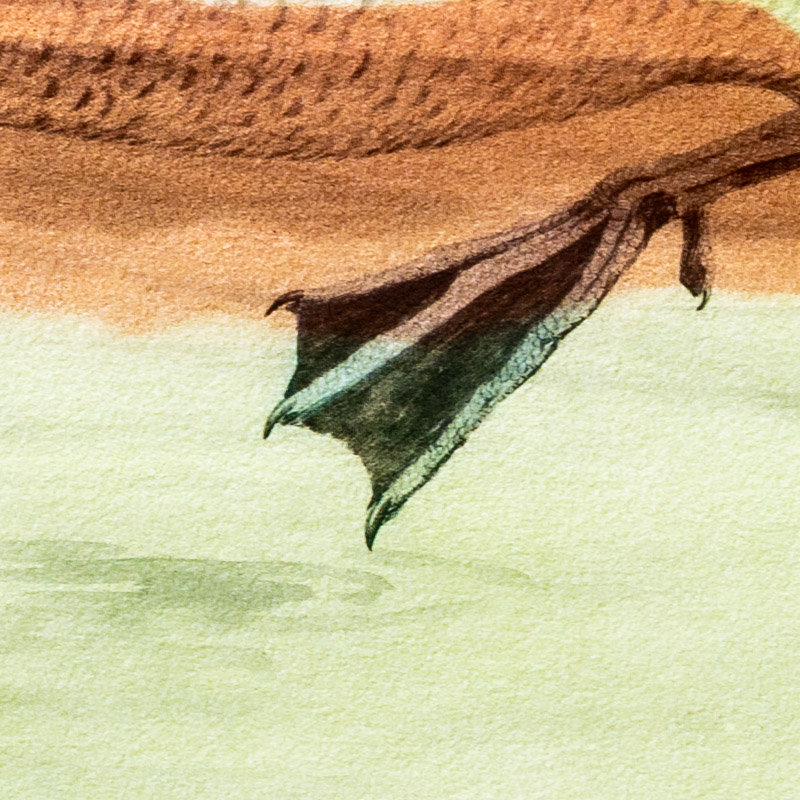
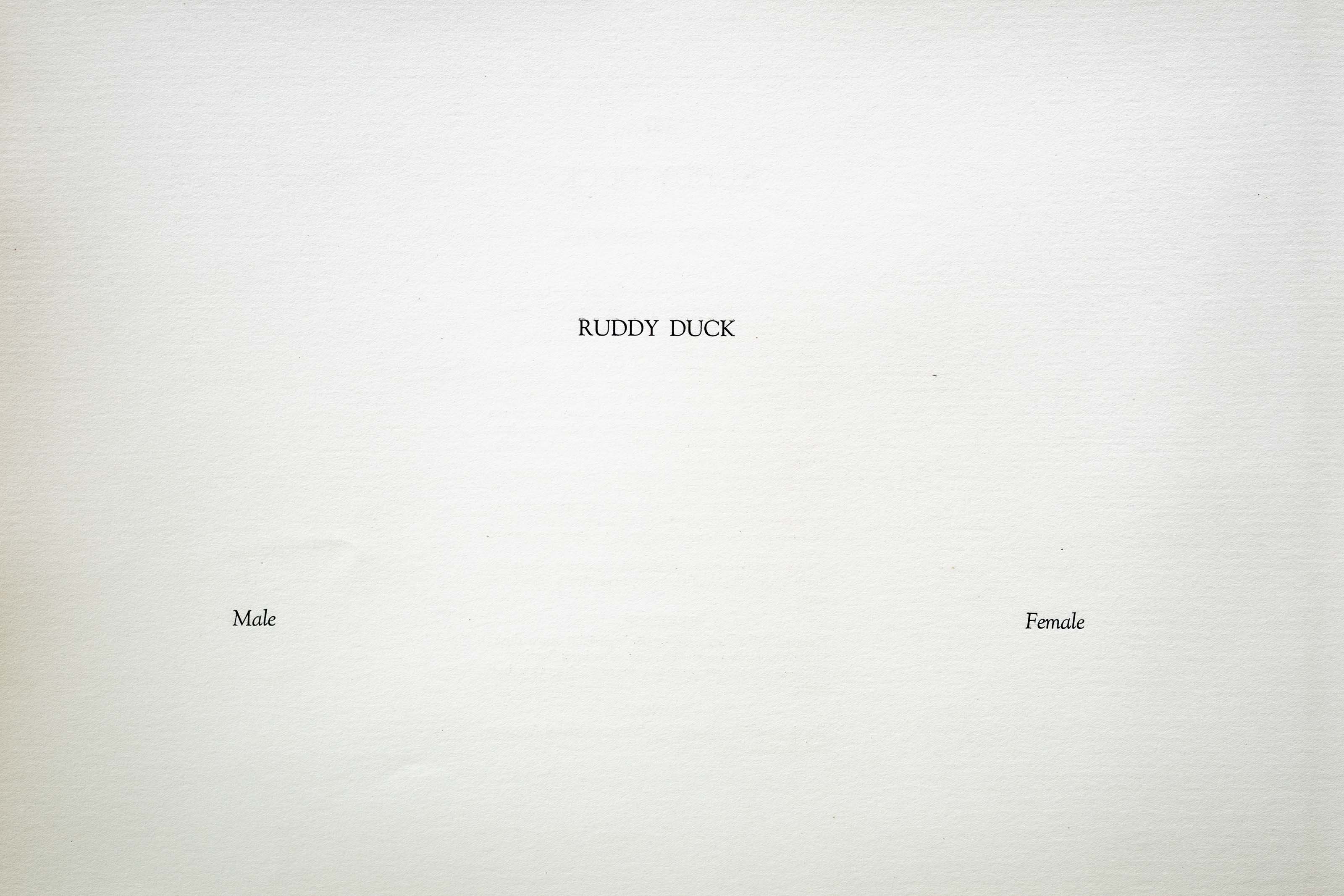
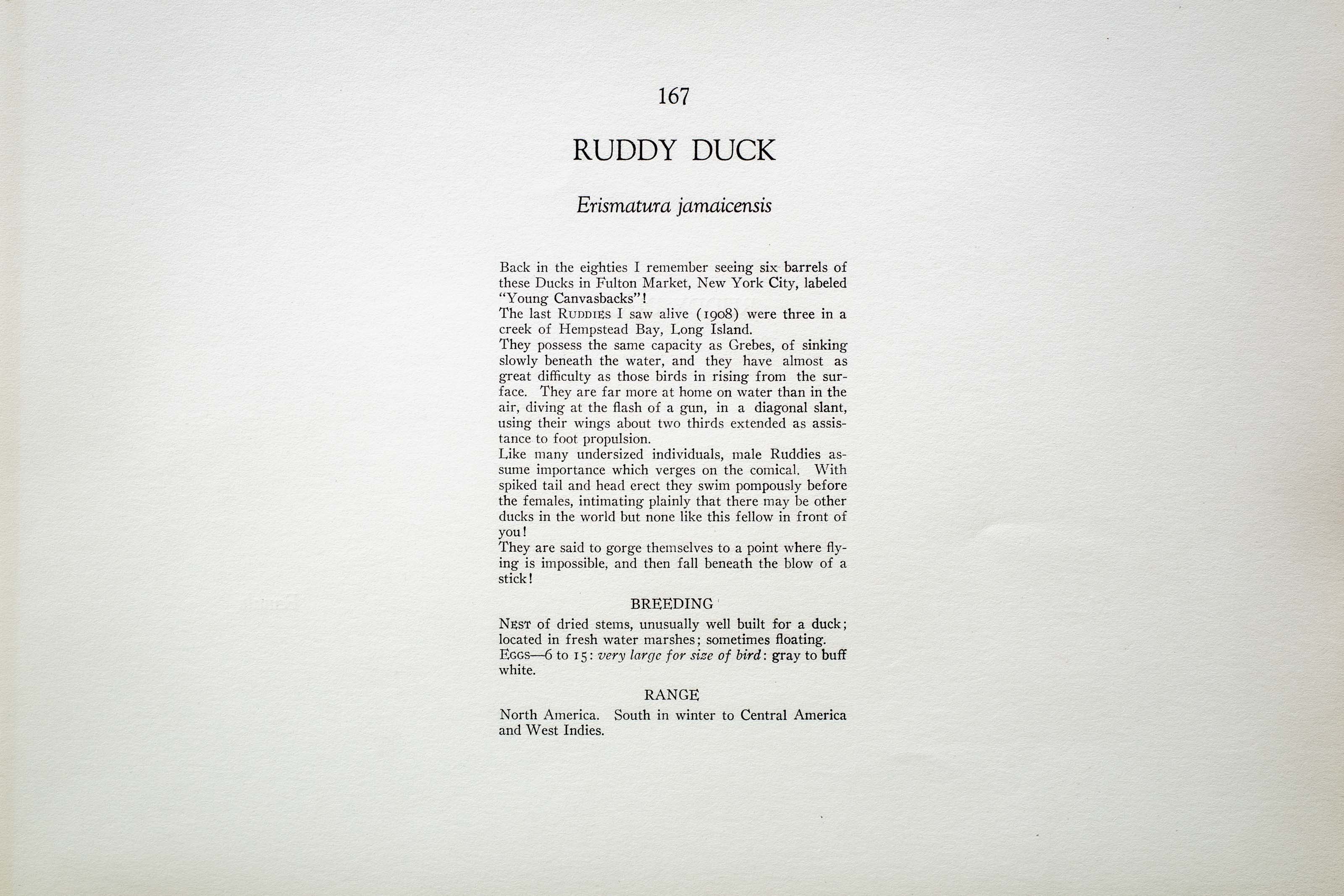

Unknown
1930
3
167
A team of dedicated board members, volunteers, and student interns has published every page in Volume 9. This volume includes 360 images of paintings and lyrical descriptions of birds, now available online for everyone to enjoy anywhere in the world. This is a monumental task. Each volume requires approximately 400 hours to photograph, edit, transcribe, catalog, and publish online. We need your support to complete this work.
If you're tech-savvy, have a good eye, are meticulous with details, and love structured data, please consider volunteering by emailing us at hello@rexbrasher.org.
We encourage all bird lovers and supporters to consider a monetary donation to support our mission to make Rex's work available for everyone. You can provide a one-time or recurring donation online.
Back in the eighties I remember seeing six barrels of these Ducks in Fulton Market, New York City, labeled "Young Canvasbacks"!
The last RUDDIES I saw alive (1908) were three in a creek of Hempstead Bay, Long Island.
They possess the same capacity as Grebes, of sinking slowly beneath the water, and they have almost as great difficulty as those birds in rising from the surface. They are far more at home on water than in the air, diving at the flash of a gun, in a diagonal slant, using their wings about two thirds extended as assistance to foot propulsion.
Like many undersized individuals, male Ruddies assume importance which verges on the comical. With spiked tail and head erect they swim pompously before the females, intimating plainly that there may be other ducks in the world but none like this fellow in front of you!
They are said to gorge themselves to a point where flying is impossible, and then fall beneath the blow of a stick!
NEST of dried stems, unusually well built for a duck; located in fresh water marshes; sometimes floating.
EGGS — 6 to 15: very large for size of bird: gray to buff white.
North America. South in winter to Central America and West Indies.